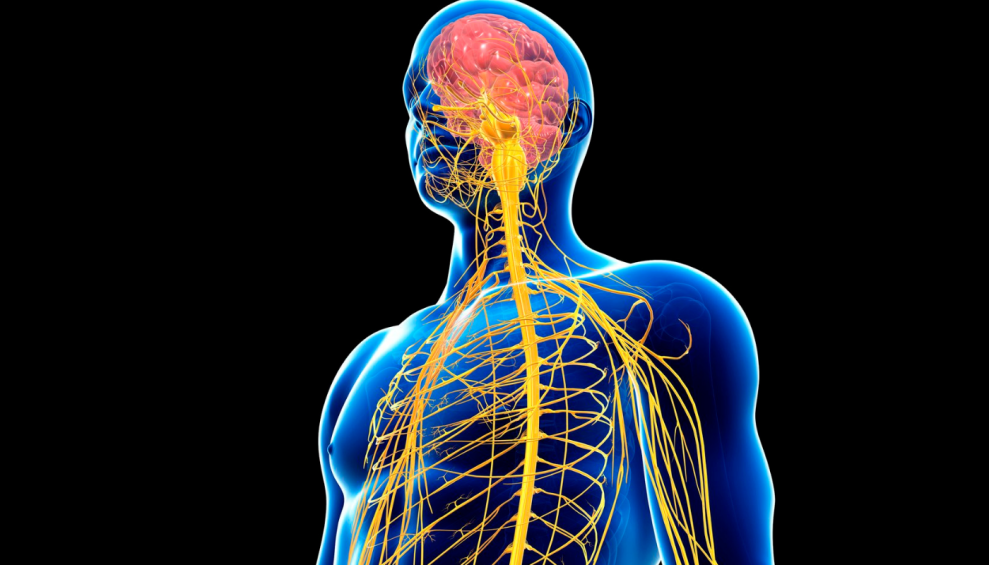|
At the International Stunt Academy, we're all about empowering stunt performers and extreme athletes to unleash their full potential, which means going beyond known and perceived limits to achieve something you never believed possible, and then making that as natural and easy as walking down the street. Through mastering body awareness and ultra-precise body movements, we help you elevate your performance, ensuring both safety and breathtaking execution. Are you ready to explore our Neuro Conditioning programme and unlock the true super-powers that lay dormant within you? Here's a taste of what's to come... Part 1: Nerves of Steel: Unraveling the Mystery of the Nervous System in Training
The nervous system and how it works in training has always been a fascinating subject and at the heart of ongoing innovations in how performers and athletes can optimise, maximise and increase quality in their development. Especially when it comes to understanding how to master intensely technical and difficult movements and techniques. The brain plays a crucial role in training, movement, and adaptation, shaping our body's ability to quickly adapt to new patterns. Whether it's learning to walk, mastering a musical instrument, or nailing a new stunt, our brain and nervous system are constantly working in tandem to help us reach our goals. The nervous system, comprising the brain, spinal cord, and nerves, plays a pivotal role in controlling and coordinating your body's functions. By understanding the connection between the nervous system and physical performance, you can harness its power to enhance your athletic abilities. Key Points:
Techniques for enhancing nervous system adaptation:
Part 2: Becoming a Stunt Superstar: Harnessing the Power of Habit and the Nervous System As extreme athletes or stunt performers, practice is the key to unlocking our potential. By pushing our body's systems gradually and allowing time to adapt, we can achieve mastery in even the most complex tasks. Whether it's executing multiple complex actions in a combined group or confidently performing a challenging stunt performance, we can utilise our nervous system to store previous tasks and create new habits to automate these, enabling us to combine more and more elements into them and then execute these tasks with incredible ease. Adapting your approach to training, incorporating Neurological development
By understanding the role of habit formation in skill acquisition, you can better train your body and mind for peak performance. Habits are formed through repeated practice, which strengthens neural pathways in the brain, making certain actions feel more automatic. Techniques for developing effective habits:
Part 3: The Power of Visualization and Feedback in Enhancing Performance Visualization, also known as "the inner film," is a mental technique employed by athletes, business professionals, and others to boost confidence, concentration, motivation, and technique learning and maintenance. It is particularly useful for athletes who are recovering from injuries. By visualizing a movement, our brain creates motor programs that enable the body to activate the right muscles and areas to make the movement as efficient as possible. "Practice Perfect" with Visualization Watching videos of a technique or movement can help you learn it faster. By envisioning the movement without actually performing it, you activate the muscles involved in the same way as if you were actually doing the exercise. To optimize this technique, close your eyes and visualize the movement from start to finish. Repeat until it feels perfect, always focusing on performing the movement correctly. The Impact of Experience on Learning Techniques Experience plays a significant role in picking up techniques faster. If the cerebellum has encountered similar exercises or movements in the past, it doesn't need to make major adjustments to learn the new technique. However, if you've never done anything similar, it may take longer to learn. Additionally, some people learn faster than others due to their innate coordination, motor skills, and body control, as well as their logical thinking abilities and understanding of different movement changes. Feedback: The Key to Improvement Feedback during various exercises is crucial for improvement. Different people learn best through different methods: some prefer verbal instructions, others benefit from visual demonstrations, and still others learn best from tactile guidance, in which the coach physically controls the movement using their hands. But Feedback isn't just about being reliant on others to tell us things. We can give ourselves feedback and the more we practice this by using positive study, reflection and conversations with ourselves the better and faster we will start to develop. Remember, this is about progressive development and it is essential not to overwhelm your nervous system with too much feedback at once. Limit yourself to 2-3 key points at a time and use simple, daily routines and movements. As you gain experience, your system will naturally start to handle more information. Ideally, study your movements and provide yourself with feedback on each movement and how to further adapt it, before the start of each session and take a a break to reflect and refocus before training in any new movement, and if necessary, repeat it before a new execution. This helps your brain to maintain focus on the task and ensures conditions for optimal learning and development. Part 4: Challenging Your Limits: The Importance of Learning New Patterns Just like a superhero discovering their powers, we can enhance our ability to learn patterns of movement and achieve incredible feats. Our body thrives on learning new patterns and adapting to new challenges. By stepping out of our comfort zones and embracing new experiences, we can boost both our mental and physical well-being. The brain's ability to inhibit unwanted movements and fine-tune our actions is a testament to the incredible power of the nervous system in training and performance. Take, for instance, Peter Parker's transformation into Spider-Man. As he begins to understand and master his newfound abilities, he learns new patterns of movement that allow him to swing through the city, perform acrobatic feats, and face off against formidable foes. Just like Spider-Man, we can improve our ability to learn new patterns by implementing certain techniques. Techniques for learning new patterns:
By following these techniques and embracing the superhero mindset, you can enhance your ability to learn new patterns of movement and unlock your full potential. Remember, with great power comes great responsibility, and the key to unlocking your abilities lies in your dedication to learning and growth. Part 5: Fine-Tuning Your Performance: Mastering the ability to harness the true potential of the Central Nervous System (CNS) The cerebellum acts as the conductor of our body's orchestra, coordinating muscle movements and refining our actions. By training and practicing, we enable our brain to establish complex networks of nerve connections, ultimately creating a harmonious symphony of movement. Building Motor Programs for Peak Performance Imagine Neo from The Matrix after he has been uploaded with the knowledge of kung-fu. He instantly gains the ability to execute precise movements, embodying the ideal synchronization of the brain, muscles, and nerves. As a stunt performer or extreme athlete, your goal is to reach that level of mastery.
By consistently practicing, fine-tuning, and expanding your repertoire of movements and techniques, you'll optimize your nervous system and elevate your performance as a stunt performer or extreme athlete. Just like Neo in The Matrix, you'll be able to execute complex movements with precision and grace, taking your abilities to new heights. Comments are closed.
|
AuthorThis blog os co-authored by The ISA Team Archives
June 2024
Categories
All
|


 RSS Feed
RSS Feed

3/2/2023